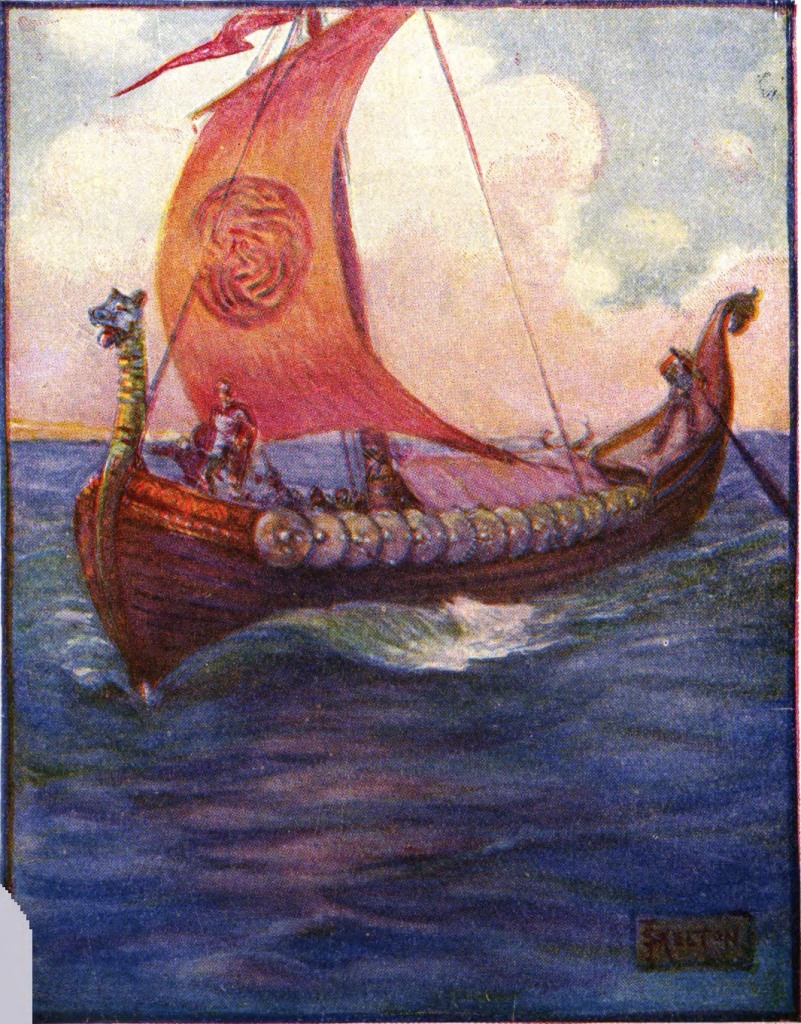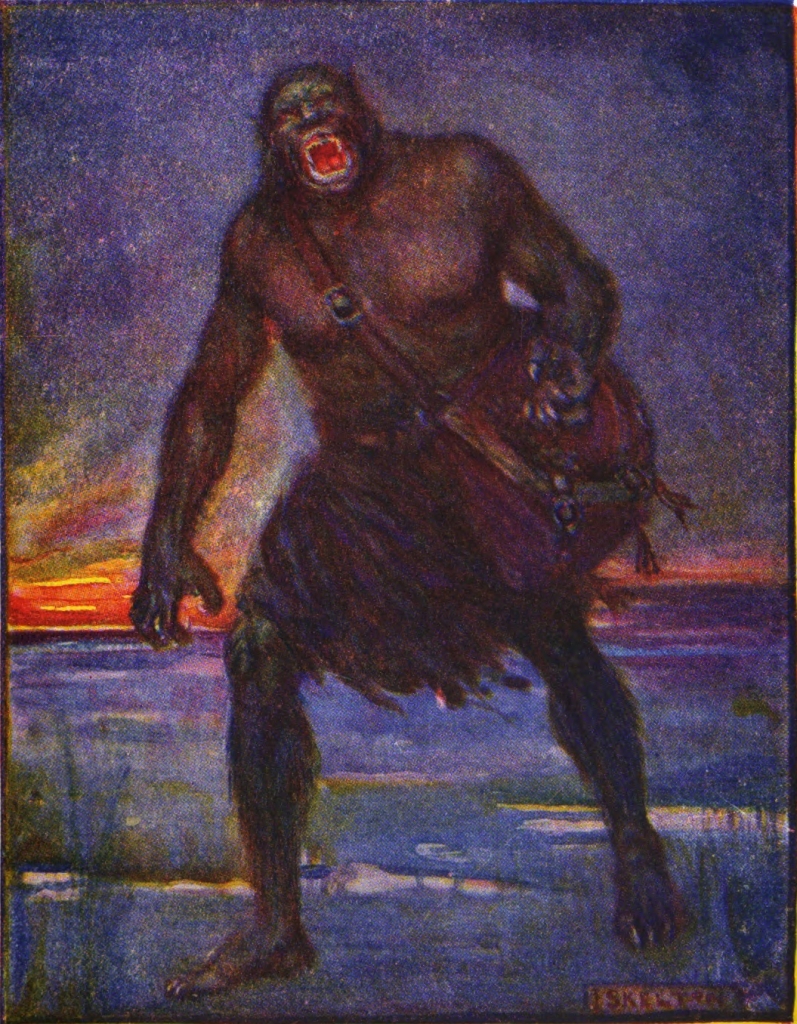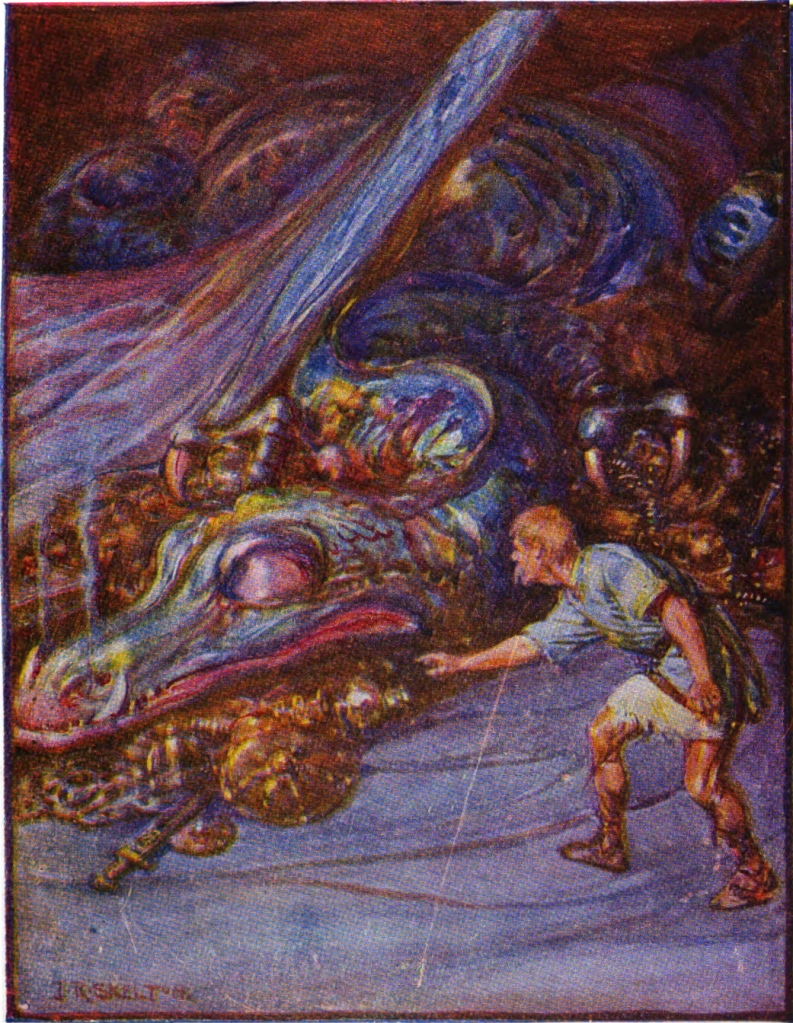Beowulf is the oldest poem that we have in an English language. It is a medieval Anglo-Saxon epic poem that tells of the adventures of the hero, a great warrior named Beowulf, who crossed the sea from Sweden and helped the Danes fight the monster Grendel. ‘Beowulf’ is based on an early Germanic tale that relates events which would have happened after the fall of the Roman Empire and before these tribes moved into Britain. It celebrates a culture that glorifies strength, courage, and heroic achievements. These stories were told in verse by poet-singers called scops as a popular form of entertainment.
 After being passed down as an oral tradition for centuries, Beowulf was written down somewhere between the eighth and tenth centuries in Old English, the language that the Anglo-Saxons spoke in Britain. We don’t know who wrote it, or exactly when or where it was written down, or if the characters in the poem really existed. The single manuscript that still exists was written in two different people’s handwriting. The poem could be one traditional tale, or a combination of a number of folk tales into one great story. There was a Swedish king named Hygelac who died in 521AD, so it is possible that some or all of the characters were based on real people.
After being passed down as an oral tradition for centuries, Beowulf was written down somewhere between the eighth and tenth centuries in Old English, the language that the Anglo-Saxons spoke in Britain. We don’t know who wrote it, or exactly when or where it was written down, or if the characters in the poem really existed. The single manuscript that still exists was written in two different people’s handwriting. The poem could be one traditional tale, or a combination of a number of folk tales into one great story. There was a Swedish king named Hygelac who died in 521AD, so it is possible that some or all of the characters were based on real people.
Old English is very different to modern English, so the poem has been translated into modern English so that we can still read and understand the poem today.
Perhaps the most distinctive poetic device in Old English poetry is the kenning. A kenning is a short, metaphorical term which describes a thing without using its name. In ‘Beowulf’, the king is referred to as a “ring-giver”, while Beowulf himself is called “Higlac’s follower”. My favourite from ‘Beowulf’ is “whale-road” as a description for the sea– isn’t that magnificent? While we are still very fond of metaphor, I think it’s a shame we don’t make more use of the kenning. Old English poetry was also characterised by strong rhythm and frequent alliteration. This would have helped the scops learn and remember the tale as an oral tradition, and added a musical element to the recitation, as well as making the story pleasant to listen to for the audience.

Modern translations follow the convention of making frequent and consistent use of both kennings and alliteration. This adds a wonderful sensory element to reading the story of Beowulf, which even today is a thrilling read. It delivers elements of adventure, history, heroism, and macabre storytelling.
The poem is way too long to include in this post, but you can find Beowulf, translated by Seamus Heaney, as a safe-to-download PDF at Scribd.
(Note: you do not have to subscribe or accept any trial memberships to get this file.)
There is also a wonderful reading of the poem in contemporary English on Youtube.

Did you enjoy this post? Please help make it more visible to others by clicking “like” below.




Great piece. Did you ever read John Gardner’s “Grendel?” It’s Beowulf told from Grendel’s point of view.
I haven’t read that, but I shall look it up. Thanks!